ISS Orbit Info
The International Space Station is maintained in a near circular orbit with a minimum mean altitude of 278 km (173 miles) and a maximum of 460 km (286 miles). A recent average (June 2010) of the altitude is 190 miles. It is travelling at an average speed of 27,724 kph (17,227 mph) and completes roughly 15.7 orbits per day, taking about 91 minutes to complete each orbit. The ISS constantly loses altitude because of slight atmospheric drag and must be boosted to higher altitudes several times a year.
Like many artificial satellites in earth orbit, the International Space Station's orbit is inclined to the equator, in this case by 51.6 degrees. A good illustration of this is when you see the graphical depiction on TV or in a movie of say a space capsule or the Space Shuttle in earth orbit shown with wavy lines. We'll call the "uphill" portion of the orbit as the ascending node and the "downhill" portion the descending node.
ISS Orbit example:
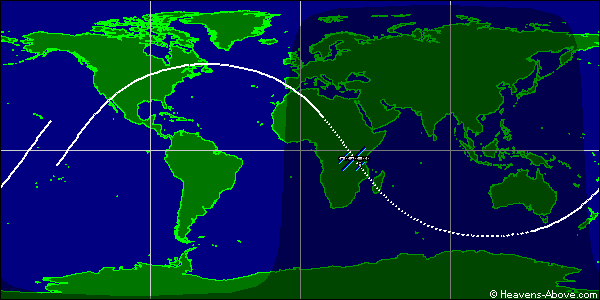
Ascending and Descending examples:
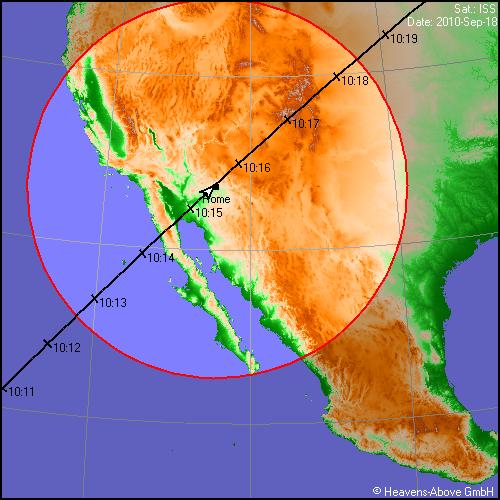
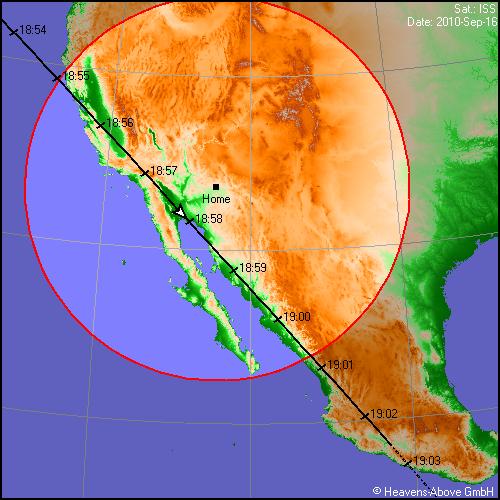
When the ISS (or other satellite) is passing over a point from southwest to northeast it is ascending and when it is passing over a point from northwest to southeast it is descending. You'll see these variations on the Heavens Above website if you dig into the details of specific ISS passes over a period of time.
The earth is spinning on its axis counter-clockwise when viewed from above the north pole, or from out in space with the earth "right side up." This is why the sun rises in the east and sets in the west. The motion of the earth and the relative speed of the ISS is why the orbit of the ISS "precesses" to the west with each succesive pass. You can see this precession on the Heavens Above website by viewing the details of two consecutive passes. The second pass will show a ground track considerably further west than the first one. Now, advanced math has never been my strong suit, but by using some trig one could probably determine how many miles each orbit precesses.
Examples of two consecutive orbits on Thursday 16 September 2010:
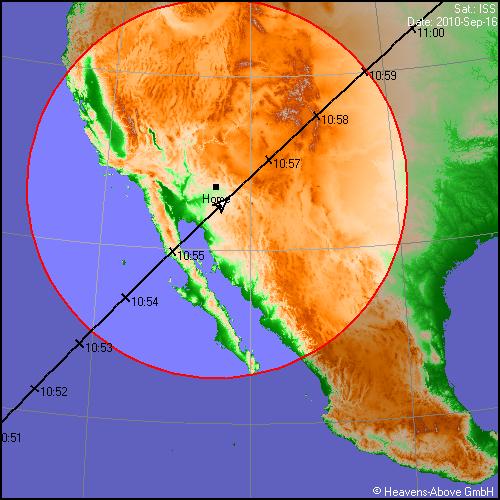
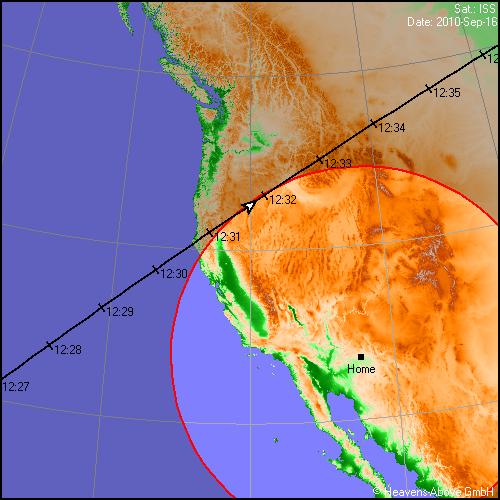
In the above examples you can see how the orbit moves to the west, and the timing is a bit over 90 minutes apart. These are daytime (and theoretically very difficult to see) passes.
Please click here to return to the tutorial.